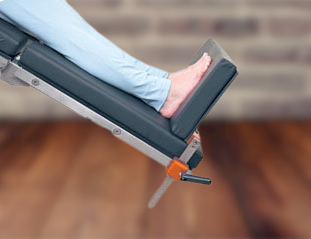The inverse of the Trendelenburg position is called the reverse Trendelenburg. which are modification of the supine or dorsal positions. Reverse Trendelenburg posture is a supine position with the feet positioned below the head. This causes the patient's head to be higher than their pelvis and their hip to be higher than their leg. For head, neck, and upper abdominal procedures, the reverse Trendelenburg position is frequently employed in the operating room. However, it is rarely utilized in regular inpatient treatment. If the patient must stay in the supine position while the NG tube is inserted and being fed, the nurse will occasionally employ the reverse Trendelenburg position.
Reverse Trendelenburg Position Definition
In the Reverse Trendelenburg position, the patient's hip and knee are not flexed, but their head and chest are lifted by 30 ° relative to their abdomen and legs. It is a supine position in which the patient's head is elevated above the rest of his body and appropriate safety equipment such as a footboard is utilized.

Reverse Trendelenburg Position Indications
The reverse trendelenburg position is also utilized for head and neck surgery and gynecological operations since it decreases blood flow to these areas. In addition, the reverse trendelenburg position can be utilized to optimize surgical access to the prostate as well as for minimally invasive operations that are performed on the upper abdominal region. It is important to gradually tilt the patient into and out of the reverse trendelenburg position in order to prevent rapid changes in blood pressure and to keep the amount of blood that is lost to a minimum. Similarly, after rhinoplasty, you should sleep with your head up and use an ice pack to reduce swelling and bruising. In cardiac procedures, it has been demonstrated that the head-up position reduces nighttime intraocular pressure and heart output.
Reverse Trendelenburg Position Benefits
The reverse Trendelenburg position has the following advantages.
It contributes to a decrease in central venous pressure but does so without causing a considerable drop in systolic blood pressure. It provides a position in which hepatectomy can be safely performed without the inferior vena cava being clamped.
Reverse Trendelenburg is a good position for a laparotomy in an obese patient because it helps to keep blood oxygen levels at a healthy range while causing little change in arterial pressure. It reduces the risk of gastroesophageal reflux disease (gastroesophageal reflux)
It can be used to enhance respiratory functioning in obese, pregnant, and lung disease patients receiving general anesthesia. It helps to move abdominal organs away from the surgical site so that better visualization can be achieved.
Reverse Trendelenburg Position Complications
It is common to practice adopting this posture during procedures involving the lower abdomen or pelvic areas, as it reduces the risk of blood pooling in those areas. The Reverse Trendelenburg position, however, can also give rise to a number of complications, including hypotension, fainting, and vertigo. In some instances, individuals may also have trouble breathing as a result of their posture. Because of these factors, it is critical to keep a close eye on patients who have been positioned in the reverse Trendelenburg position and to take measures to lower the likelihood of complications occurring.






0 Comments
For comments please reply here.......